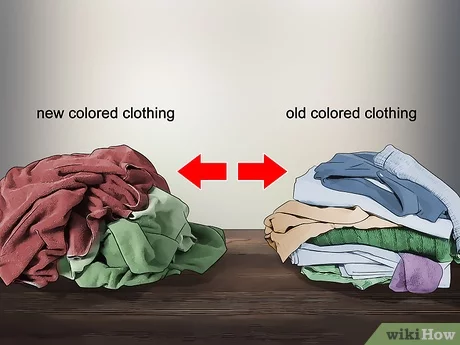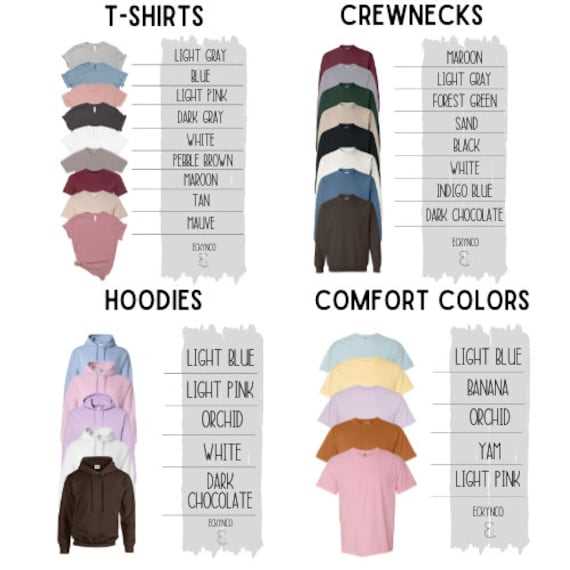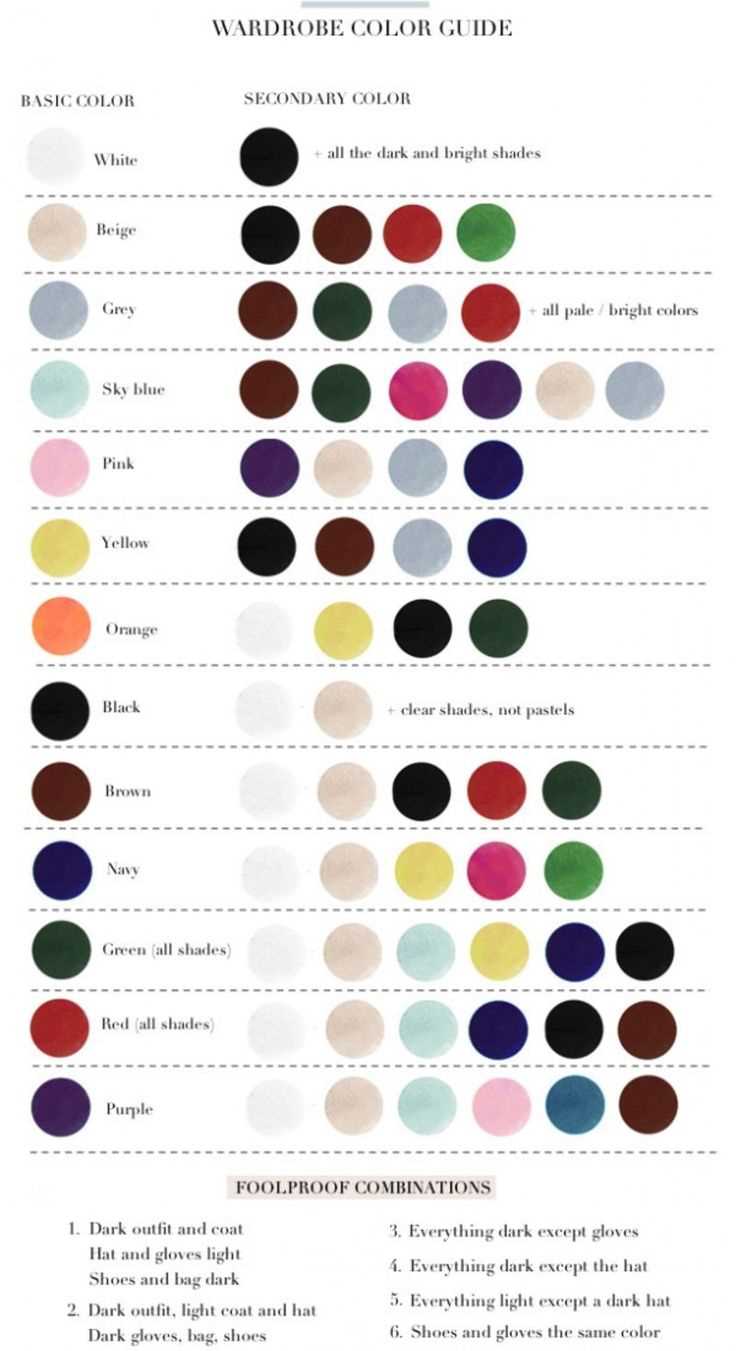




If you’ve ever done laundry, you know that sorting your clothes by color can be a tedious task. But keeping your colors looking vibrant and preventing any accidental staining or bleeding is worth the effort. Have you ever wondered what colors can be washed together without any issues? In this ultimate guide, we will explore the do’s and don’ts of washing different colors together.
Sorting your Laundry
When it comes to sorting your laundry, it’s important to separate your whites, darks, and colors. Whites should be washed separately to avoid any color transfer, while darks should also be washed separately to prevent them from fading. As for colors, you need to consider the intensity and shade of each color to determine if they can be washed together.
Light and Dark Colours
Typically, light colors such as pastels and pale shades can be washed together. This includes light blues, pinks, yellows, and greens. On the other hand, dark colors like navy, black, and deep reds should be washed separately from light colors to prevent any bleeding or staining.
Pro tip: If you’re unsure about a specific color, it’s always best to err on the side of caution and wash it separately the first time.
Reds and Bright Colours
Reds, oranges, and other bright colors can be difficult to wash because they have a higher chance of bleeding and staining. It’s best to wash these colors separately or with similar bright colors to avoid any potential color transfer. When in doubt, always refer to the care label on your clothing for specific washing instructions.
Choosing Colors for Laundry: The Ultimate Guide
When it comes to doing laundry, one of the most important aspects is sorting your clothes by color. Washing different colors together can lead to color bleeding, fading, or staining, which can ruin your clothes. Follow this ultimate guide to choose the right colors for laundry and keep your clothes looking their best.
1. Grouping Similar Colors Together
The first step in choosing colors for laundry is to group similar colors together. Divide your laundry into three main groups: lights, darks, and whites.
Lights: This group includes pastels, whites with a light color pattern, and light gray.
Darks: This group includes black, navy blue, dark brown, deep purple, and other darker colors.
Whites: This group includes all white clothing that does not have any other color patterns or prints.
2. Washing Whites Separately

It is recommended to wash white clothes separately from other colors. This will prevent any color bleeding or staining and keep your whites looking bright.
TIP: Consider using a laundry detergent specially formulated for whites to keep them looking vibrant.
3. Washing Lights and Darks Separately
While it is essential to separate lights and darks, you can generally wash them together. However, to preserve the colors, it is best to wash each group separately.
TIP: Turn your dark clothes inside out before washing to minimize fading.
4. Considering Fabric Type

Aside from color, it is crucial to consider the fabric type when choosing colors for laundry. Delicate fabrics such as silk or wool may require separate washing or a gentle cycle, regardless of color.
5. Using Color-Catching Sheets or Dye Trappers

If you need to wash clothes of different colors together, you can use color-catching sheets or dye trappers. These products absorb any color bleed, preventing it from transferring to other clothes.
6. Checking Care Labels
Always check the care labels on your clothes for specific washing instructions. Some garments may require special care, and following the instructions will help maintain their color and quality.
7. Sorting Small Loads
To ensure effective cleaning and prevent color bleeding, make sure you have a sufficient amount of clothes in each load. Sorting small loads can lead to excessive water use and ineffective cleaning.
8. Cleaning the Washer Regularly
Keeping your washer clean is crucial to avoid any residue or color transfer. Follow the manufacturer’s instructions for regular cleaning and maintenance.
TIP: To remove any color residue from the washer, run an empty load with hot water and a cup of white vinegar.
Conclusion

Sorting your laundry by color is essential to maintain the quality and appearance of your clothes. By following these tips and grouping similar colors together, you can ensure that your clothes remain vibrant and free from color bleeding or fading.
Understanding Color Categories

Colors can be categorized into different groups based on their properties and how they interact with each other. Understanding these color categories can help you determine which colors can be washed together without compromising their vibrancy or causing any color bleeding. The three main color categories are:
1. Whites and Light Colors
Whites and light colors can generally be washed together without any issues. These colors include shades like pastels, creams, light grays, and similar hues. Washing whites separately or with other light colors helps to maintain their brightness and prevent any color transfer.
2. Dark Colors

Dark colors, such as blacks, navys, dark browns, and deep purples, should be washed together. These colors have a higher risk of bleeding, so it’s essential to separate them from light or vibrant colors. Washing dark colors separately also helps to prevent fading and maintain their intensity.
3. Vibrant Colors
Vibrant colors, including bright reds, yellows, blues, and greens, require careful washing to prevent color bleeding or fading. It’s best to wash these colors separately or with similar vibrant shades to minimize the risk of color transfer. Mixing vibrant colors with whites or light colors can result in dulling or staining.
It’s also worth considering the fabric type when organizing your laundry. Some fabrics are more prone to color bleeding, regardless of the color category. Always check the care label of your garments for any specific washing instructions or color recommendations.
| Color Category | Washing Tips |
|---|---|
| Whites and Light Colors |
|
| Dark Colors |
|
| Vibrant Colors |
|
By understanding these color categories and following proper washing guidelines, you can keep your clothes looking vibrant and prevent any unwanted color mishaps during laundry.
Sorting Clothes by Color
When it comes to washing clothes, sorting them by color is important to prevent any color bleeding or transfer. By separating clothes based on their color, you can ensure that your clothes remain vibrant and avoid any mishaps during the washing process.
Why Sort Clothes by Color?

Sorting clothes by color helps prevent color bleeding during the wash. Certain colors are more prone to bleeding than others, especially dark and vibrant colors. When clothes bleed, the dye from one garment can transfer to other garments, causing unwanted color changes.
Sorting clothes by color also helps to preserve the quality and lifespan of your clothes. Some fabrics may react differently to different colors, so separating them can prevent any potential damage. Additionally, sorting by color allows you to adjust the water temperature and washing cycle settings specifically for each color group, ensuring that clothes are cleaned effectively.
How to Sort Clothes by Color
Here is a simple guide on how to effectively sort your clothes by color:
- Separate your clothes into different piles based on color groups.
- Categorize your clothes into the following color groups:
- Whites and light colors
- Dark colors
- Brights and vibrant colors
- Prints and patterns
- Check each garment for colorfastness. If you are unsure about a particular item, you can perform a colorfastness test to see if the dye bleeds.
- Wash each color group separately using appropriate detergent and water temperature settings. Follow the care instructions on the garment’s label for best results.
- Consider using color-catching sheets or laundry detergents with color protectors to further prevent color bleeding.
Tips for Sorting Clothes by Color
Follow these additional tips to ensure you effectively sort your clothes by color:
- Sort clothes before each wash to prevent any accidental color transfers.
- Wash new or brightly colored clothes separately for the first few washes to prevent bleeding.
- Pre-treat any stains before washing to increase the chances of stain removal.
- Avoid overloading the washing machine, as this can lead to inadequate cleaning and potential color bleeding.
- Always consult the care label instructions on each garment for specific washing recommendations.
By following these guidelines, you can keep your clothes looking fresh and vibrant while preventing any color mishaps during the washing process.
Mixing Light and Dark Tones
Mixing light and dark tones in the wash can be a bit trickier than washing similar-colored clothes together. However, with a few guidelines, you can successfully wash a combination of light and dark tones without ruining or transferring colors between garments.
Separate Lights and Darks
The first step in washing light and dark tones together is to separate them by color. Divide your laundry into two piles: lights and darks. This way, you can have better control over the colors and prevent any color bleeding.
Consider Similar Tones

Even within the light or dark pile, consider sorting the clothes by the similarity of their tones. For example, keep pastels separate from vibrant or neon colors. Similarly, separate navy or black from lighter dark tones like greys or browns. Washing clothes with similar tones together minimizes the risk of colors bleeding into each other and helps maintain the original hue of each garment.
Test for Colorfastness
Before washing light and dark tones together, it is important to test for colorfastness. To do this, dampen a small hidden area of the garment with water and gently rub it with a white cloth. If there is no color transfer onto the cloth, the garment is likely colorfast and can be washed with other clothes. If there is color bleeding, it is best to wash the item separately to avoid color transfer to other garments.
Use Cold Water and Appropriate Detergent

When washing light and dark tones together, always use cold water. Cold water helps minimize color bleeding. Additionally, choose a mild detergent that is specifically formulated for colored garments. These detergents are designed to help preserve the vibrancy and prevent color fading.
Use Gentle Cycle and Avoid Overloading
When washing light and dark tones together, opt for the gentle or delicate cycle on your washing machine. This cycle tends to be more gentle on clothes and reduces the risk of color bleeding. Avoid overloading the machine to allow enough space for thorough cleaning and minimize friction between garments.
Avoid Harsh Stains and Spot Treatments

While spot treatments and stain removal are often necessary, it is best to avoid them when washing light and dark tones together. These treatments can potentially fade or alter the color of specific areas, leading to uneven color distribution. If a garment has a stain, it is better to treat it separately before washing or consider using a color-safe stain remover.
Additional Tips:
- Avoid washing heavily soiled or stained clothes together with light or dark tones, as this can lead to color transfer or stains on other garments.
- If you are unsure about washing a particular garment with light or dark tones, it is best to err on the side of caution and wash it separately.
- Read and follow the care labels on your clothes to ensure proper washing instructions.
Avoiding Color Bleeding
Color bleeding, also known as color transfer, happens when the colors from one item of clothing mix with the colors of another during the washing process. This can result in unwanted color changes and can ruin your clothes.
To prevent color bleeding, follow these tips:
- Sort laundry by color: Separate your laundry into light and dark colors. Washing similar colors together reduces the risk of color bleeding.
- Use cold water: Cold water helps to prevent dyes from bleeding out of the clothes. Avoid using hot water, as it can accelerate color bleeding.
- Pre-treat stains: Treat any stains on your clothes before washing. Stains can intensify color bleeding, so it’s essential to tackle them beforehand.
- Turn clothes inside out: Turning your clothes inside out can help protect the color from fading or bleeding during the wash cycle.
- Avoid overcrowding the washing machine: Overcrowding the machine can prevent clothes from agitating correctly, increasing the chances of color bleeding.
- Use color-catching sheets or laundry pods: Color-catching sheets or laundry pods can absorb any colors that may bleed during washing, preventing them from transferring onto other clothes.
- Read garment labels: Always read the care labels on your clothes. Some garments may require special care, such as handwashing or dry cleaning, to avoid color bleeding.
- Test new garments: Before washing a new item of clothing for the first time, it’s a good idea to test for color bleeding. Dampen a small, inconspicuous area and press it against a white towel. If the color transfers, wash the garment separately.
By following these guidelines, you can help prevent color bleeding and keep your clothes looking vibrant and fresh.
Special Considerations for Delicate Fabrics
When it comes to washing delicate fabrics, it’s important to take extra care to preserve their quality and prevent any damage or discoloration. Delicate fabrics include silk, lace, cashmere, and satin, among others. Here are some special considerations to keep in mind when washing these types of fabrics:
- Separate by Color: Just like with regular laundry, it’s important to separate delicate fabrics by color to prevent any color bleeding or transfer. This will help to preserve the original colors and keep your delicate fabrics looking their best.
- Use a Gentle Cycle: Delicate fabrics should be washed on a gentle cycle to prevent any agitation or stretching of the fibers. This will help to maintain the integrity of the fabric and prevent any damage.
- Use Mild Detergent: Avoid using harsh detergents or bleach when washing delicate fabrics. Opt for a mild detergent specifically designed for delicate fabrics or hand washing. This will ensure that the fabric is cleaned without causing any harm.
- Hand Wash if Necessary: For extremely delicate fabrics, hand washing may be the best option. Fill a sink or basin with lukewarm water and a mild detergent, then gently agitate the fabric for a few minutes. Rinse thoroughly and carefully squeeze out any excess water. Avoid wringing or twisting the fabric, as this can cause damage.
- Avoid Heat: Delicate fabrics should be air dried or dried on a low heat setting. High heat can cause shrinkage, stretching, or even melting of delicate fabrics. Hang or lay the fabric flat to dry, and avoid direct sunlight to prevent fading.
- Iron with Caution: If ironing is necessary, use a low heat setting and place a thin cloth or pressing cloth between the iron and the fabric to prevent direct contact. This will help to protect the delicate fabric from scorching or melting.
By following these special considerations for delicate fabrics, you can ensure that your favorite delicate garments stay in great condition and last for many wears to come.
FAQ
Can I wash black and white clothes together?
Yes, you can wash black and white clothes together. These colours are safe to be washed together as they won’t bleed into each other. However, make sure to separate any new black or dark-coloured clothing items as they may still release some dye during the first few washes.
Is it safe to wash colours with whites?
No, it is not recommended to wash colours with whites. Washing coloured clothing with whites can cause the colours to bleed and transfer onto the white garments, resulting in staining. It is best to separate whites from colours to prevent any potential damage or discolouration.
What colours should I avoid washing together?
It is advisable to avoid washing colours with whites, as mentioned earlier. Additionally, it is recommended to avoid washing contrasting colours together, such as red and white, as there is a higher chance of colour bleeding. To preserve the vibrancy of your garments, it is best to separate different colour groups and wash them separately.
Can I wash different shades of blue together?
Yes, it is generally safe to wash different shades of blue together. Blue is a colour that tends to be more stable and less likely to bleed. However, be cautious when washing very dark shades of blue, especially if they are new, as they may potentially release some excess dye during the first few washes.
Is there a risk of colour fading when washing colours together?
There is always a slight risk of colour fading when washing colours together, especially if you are washing them frequently or using harsh detergents. To minimize this risk, it is recommended to use a gentle detergent and wash your coloured garments on a cold or cool water setting. Additionally, turning clothes inside out before washing can help protect the colours from direct friction with other garments.
Can I wash dark and light colours together in the same load?
It is generally not recommended to wash dark and light colours together in the same load. Washing them separately helps prevent any colour bleeding or transfer that may occur. However, if you really need to wash them together, make sure to sort them properly and use a cold water setting.
What happens if I wash whites with colours?
If you wash whites with colours, there is a risk of colour bleeding or transfer. This can result in your white clothes becoming stained or discoloured. To avoid this, it is best to wash whites separately or with other light colours. Using a colour-catching sheet or product can also help prevent colour transfer.














